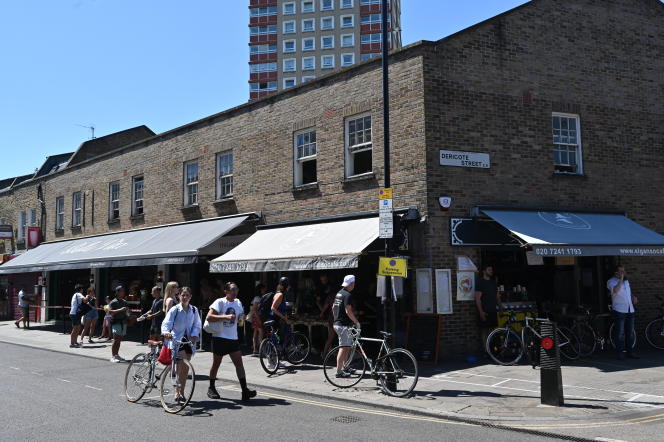When did Broadway Market in east London go under? When did the Bad Boys hot dog stand at 10 pounds (12 euros) a piece arrive? When the old stall selling jellied eel, an old popular neighborhood tradition, was transformed into an overpriced sunglasses store? Unless it was when Planet Organic, an organic supermarket chain, arrived in what was once a squat?
Still, Stéphane Cusset, who has been running L’Eau à la bouche, a French grocery store, in this street for twenty years, does not hide a certain discomfort. “Honestly, I avoid coming here on weekends now. Look, the street has become a tourist attraction”he laments, pointing to a woman passing by with her wheeled suitcase.
Broadway Market is located in Hackney, once one of the poorest areas of the British capital. In the early 1990s, artists, attracted by low rents and proximity to central London, settled there. In 2004, a few volunteers revived the market that had disappeared. The success was very fast. Initially, the opening took place only on Saturdays. It extended to Sunday. Many restaurants have opened.
Filthy pubs turned “gastro-pubs”
The grubby old pubs have become “gastro-pubs”. The “market” (it sells almost exclusively food to eat on the spot, few fruits and vegetables) attracts all that London has of young hipsters, who spend hours sitting in the nearby park sipping beers and wine white. The atmosphere is relaxed, friendly and has nothing to do with the proletarian district of yesteryear.
The gentrification of Broadway Market is just the latest example of a phenomenon that has transformed all of London. In the 1960s, King’s Road, in the west of the capital, was the fashionable sector; today, it is an openly bourgeois district. Then it was the turn of Portobello Market, where Richard Branson launched his Virgin label in the 1970s, then Camden Market, in the north, where the punks met. The latter is owned today by Israeli billionaire Teddy Sagi, who tried to sell it last year for 1.5 billion pounds. ” No future », they said…
In the 2000s, the movement caught up with east London. In Brick Lane, Indian restaurants, run by Bengali immigrants in the 1970s, are giving way to trendy bars with ” beers craft ». “East London is becoming like the west: a tourist attraction”sighs Joel Reland, who grew up near Broadway Market. He is 29 years old, graduated from Cambridge University, works in a think tank and lives with a partner, but he could barely afford rent there today: “We would get there, but we couldn’t save anything anymore”says his companion. “And frankly, living here has gotten a little cheesy [naff] adds Mr. Reland. After being popular and then gentrified, the East End is simply becoming bourgeois. On average, a house in the neighborhood sold for 80,000 pounds in 1995, and… 1.1 million today. That is 1,275% increase in almost three decades.
You have 41.41% of this article left to read. The following is for subscribers only.
